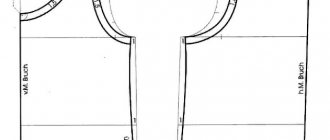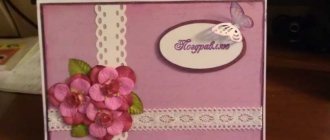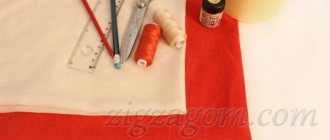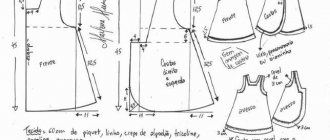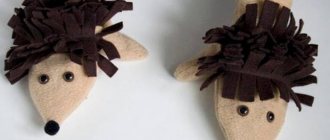Causes of problems
It happens that clothes change size when washed. Cotton and wool often become smaller. Why did the dress shrink? This trouble is caused by two reasons:
- Poor quality processing, defects. The item shrinks if the fabrics were not pre-treated before cutting or low-quality materials were used.
- Care instructions were not followed. For example, the label indicated that washing is allowed at 30 degrees, but the item was washed at 60.
How to arrange (alter) a dress if it is too small
First, you need to decide what you want to get in the end. And, of course, it all depends on the design of the dress that needs to be altered. If it has numerous seams, reliefs, and yokes, this even simplifies the situation. You can simply insert some material between the seams. But in any case, the dress will have to be torn apart.
After this, press the seams well. Carefully remove all threads from the previous seams. Next, decide on the material you will insert. You can use a similar texture or color to the main one, or you can use a contrasting one. For example, take guipure or some kind of mesh.
This will not only help solve the size problem, but will also add femininity and sexuality to your outfit. If you are afraid of exposed areas on your body, try using double material. Nowadays it is very fashionable to put mesh fabric on top of satin or silk. Flesh-colored fabric goes well with black guipure. You can take red and black fabric. The effect will be simply amazing!
How to stretch a dress correctly
If the item has not shrunk catastrophically, but has become only a little tight, then it is quite possible to stretch it. It is important to take your time and act carefully and carefully.
Dresses made of simple cut and natural fabrics
After washing:
- Soak shrunken clothes in cool water for half an hour.
- Then wash on the “delicate wash” setting.
- Take out the dress, carefully stretch it with your hands, first in width, and then (if necessary) in length.
- Dry on hangers, straightening out well.
After ironing:
- Treat the item with a steam generator.
- Stretch the still warm one with your hands.
Another option with ironing is to iron the dress through damp gauze, gently stretching the fabric with your hands.
Knitwear
To stretch a shrunken knit dress:
- Soak the shrunken knitwear in cool water with the addition of vinegar (50 ml per 8 liters of water).
- Directly in the basin, carefully stretch the item in width, trying to do it as evenly as possible along the entire length.
- Spread the towels on a flat surface, lay out the dress that has been wrung out from the water and stretch it to give the desired shape, secure with light stitches of thread or pins.
- When the item is almost dry, put it on and wear it until the dress is completely dry.
Subsequently, the item must be washed on a delicate cycle in cool water, otherwise it will shrink again.
Instructions for upsizing
It is quite easy to reduce a finished product by one size, but making a finished product a size larger is almost impossible. The exception is women's dresses, which are sewn according to standard patterns. This is due to the peculiarity of using the technique when special allowances are left on the sides, as well as on the main seams. Using this simple technique, you can make a tight dress fit properly.
The style and model of the dress also matter when altering. The more inserts, fittings or decorative elements there are on a product, the higher the likelihood of successful remodeling.
See also
TOP 5 ways to remove rhinestones from clothes at home without leaving a trace
In the hips
There is often a situation where a dress fits true to size, but is too tight in the hip area. In this case, it is enough to undo the seams on the hips and reduce the allowances. The main task is to make the seam lines smooth and invisible from the outside. The second way to increase the hip area is wedge-shaped inserts. To do this, you will need fabric that is suitable in structure and contrasting in color. It is necessary to sew in the wedges strictly following the pattern, maintaining symmetry.
At the waist
To increase your waistline, you can use one of the following options:
- Raising the waistline, inserting a peplum. This option is perfect for straight-cut models. The only difficulty is the selection of fabric: it must fully match the type of fabric on the finished product, repeat the pattern and structure.
- Changing the belt line. The dress can be cut off below the bust line, then have a wide insert made of contrasting material.
- Changing the model. To do this, symmetrical inserts are made along the waistline on each side. This method requires high skill.
On the chest
There are several alternative methods for increasing dress bust size:
- unraveling seams, increasing the line due to allowances and darts;
- increasing the neckline, if the style allows it;
- inserts made of contrasting material, sewing in decorative elements.
Each option requires careful and careful execution. The area of the dress on the chest is the most noticeable; any inaccuracy will lead to the fact that the product will look ridiculous. You can change the volume of the dress on the chest using flounces or frills. To do this, the main part of the bodice is unraveled, flounce inserts or frill inserts are made. This method visually enlarges the breasts, so it is not popular with everyone.
How to increase length
Increasing the length is only possible if there is a significant margin along the edge. The seam is ripped out, the allowance is completely eliminated, and the edges are turned in the simplest way. Other ways to increase length are methods that change the overall appearance of the product. This applies to decorating the hem with lace, fringe or tassels. Such techniques will make the overall length visually lower, but the dress itself will not change the length.
Sometimes it is appropriate to add strips of fabric along the hem. To do this, select a fabric with a similar structure so that the connecting seam between the finished product and the additional fabric is smooth and does not create additional folds.
See also
Methods of how and what to wash a ceiling painted with water-based paint
Yoke
A yoke helps to change the model of any style. To increase the size of a dress, it is customary to use cut-off and stitched yokes. Remodeling using a yoke requires high skill and level of performance. The yoke can be inserted on the back, thereby increasing the size along the bust line, and it can also be sewn into the upper part of the dress, completely changing the structure of the bodice. For the yoke on the top of the dress, it is advisable to use lace, mesh, and lightweight fabrics, which are quite difficult to sew in unless you have special equipment.
Corsage belt
A corset-type belt, which is sewn along the waistline, will help correct the situation, reducing fabric consumption in this way, increasing the length and volume of the waist. For the corsage, take ready-made corset-type belts and insert them into the bodice. Despite the fact that the corsage looks advantageous, solves several problems at the same time and is a fashionable part of any image, such an element cannot be sewn into every dress. The corsage should match the fabric structure of the finished product so that there is no feeling of complete mismatch between the parts.
Reference! When planning a bodice insert, it is necessary to take into account that lacing can highlight imperfections in the figure.
Inserts
Wedge-shaped inserts are made along the entire length of the product. Such inserts in the hip area look especially advantageous. To sew fabric inserts into the bodice, you need to choose the right material and correctly predict the finished appearance of the product. The most difficult option is inserts at the waist. Making them look natural is very difficult.
Lacing
Lacing solves the problem of tightness of the dress in the neckline area. Lacing with a laconic bodice decoration helps to discreetly change the size of the upper part of the dress. It is suitable only for those models with a low and deep neckline.
Lacing on the back is possible if the dress can be carefully ripped along the central seam and successfully finished around the edges. Lacing along the hips is an extreme option, which is used only when decorating designer outfits. A dress with sewn-in lacing at the hip can be worn to an informal event, party, or late dinner.
On the sides
Inserts with lacing are made on both sides of the dress or sewn on one side of the product. This option will help increase the size of any dress. When cutting, an expansion technique is used: from the top of the dress, the insert with lacing placed over it gradually expands to the bottom. The technique looks laconic provided that the fabric insert and the material of the finished product successfully match.
See also
TOP 20 products on how and how to clean frosted glass without streaks at home
DIY dress alteration
If the dress is 2 sizes or more small, then all that remains is to alter the model, expanding it on the sides with your own hands. Altering clothes is not difficult, but you still need to have some skills.
Using seam allowances
This method is suitable if the clothes are very small. Modern manufacturers do not leave large seam allowances. At best, you will be able to win 1 size.
How to proceed:
- The model is carefully ripped out along the side seams, on the back, and in relief.
- All threads are carefully removed and the seams are ironed.
- The seams are sewn again, stepping back from the previous line to the edge of the part.
- New seams are processed and ironed.
Using inserts
Increasing the size of clothing using inserts is a more serious job. The easiest way to solve the problem is if the dress is too small in one specific area, for example, too tight in the chest or sleeves. The most difficult thing is to increase the size if the model is narrow at the waist, you will have to almost completely alter the outfit.
The fabric for the inserts must be chosen carefully. The right choice is half the success:
- It is better to select fabric of the same thickness and density as the original fabric;
- the fabric for inserts should not fade;
- You can use lace for inserts, but on the sides and chest - only on top of the “background” material, in this case it is especially important to take into account the overall thickness.
You can choose the color of the fabric to your taste, the main thing is that it matches well with the main material. Before cutting, the new material must be wetted, dried and ironed so that it does not shrink when washed.
Depending on the location of the problem, inserts are cut out taking into account seam allowances:
- Dress, narrow on the sides. This is a simple option: the model is ripped out along the side seams and inserts in the form of wedges or even strips are sewn in. In the latter case, similar inserts will need to be made in the seams of the sleeves.
- Clothing is too tight in the chest. Here the insert options depend on the style. If the model has darts, they need to be opened and made less deep. Or make inserts that allow you to expand the dress in the bust area. The third option is to cut out the shirt front and sew in a wider one, you will get a dress with a yoke.
- Straight-cut clothing can be increased in size by inserting seam inserts along the center front and back seams.
- The easiest way is to increase the length of the dress. To do this, just sew a frill at the bottom or make an insert-belt at the waist.
Lacing
An original way to slightly increase the size of a tight-fitting dress or blouse is to make lacing. But this is a rather complicated method that requires a special tool:
- The product is ripped out along the seam where the lacing will be, and the edges are processed.
- Holes are punched and metal blocks are installed - special parts secured to the fabric with a collet tool.
- Then the lace is threaded and tightened to the desired width, like a corset. The result is an outfit with an original cut. To make the item less revealing, under the lacing you should make an insert of translucent chiffon, lace or other fabric.
So, don't rush to throw away your dress if it gets a little tight. It can be remade into a new, original outfit.
What you need for work
To correct this situation, you need to prepare special sewing supplies. The process of altering a finished product is often associated with patience, because the basis for altering a dress is ripping the seams.
What you will need:
- Sharp tailor's scissors and small nail scissors. Scissors are necessary for ripping seams, making cuts and cuts.
- Needles and pins. Necessary for chipping or connecting different parts of the product when sweeping parts is planned.
- Centimeter, ruler. Necessary for drawing straight lines so that the parts of the product are symmetrical relative to each other.
- Chalk or a piece of soap. With the help of these objects, marks are left on the fabric, lines are drawn along which a seam must be made in the future.
- Threads of different colors. They select threads that match the main color of the product, and also use colored threads to highlight an area on the dress.
- Sewing machine. Needed for sewing seams.
Reference! To rip small seams, it is recommended to use razors or stationery knives.
